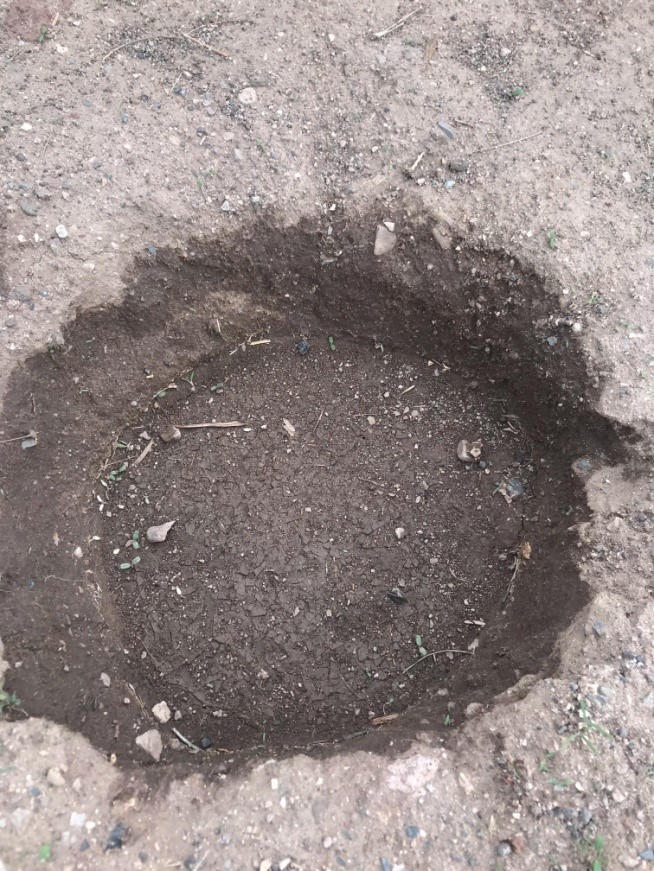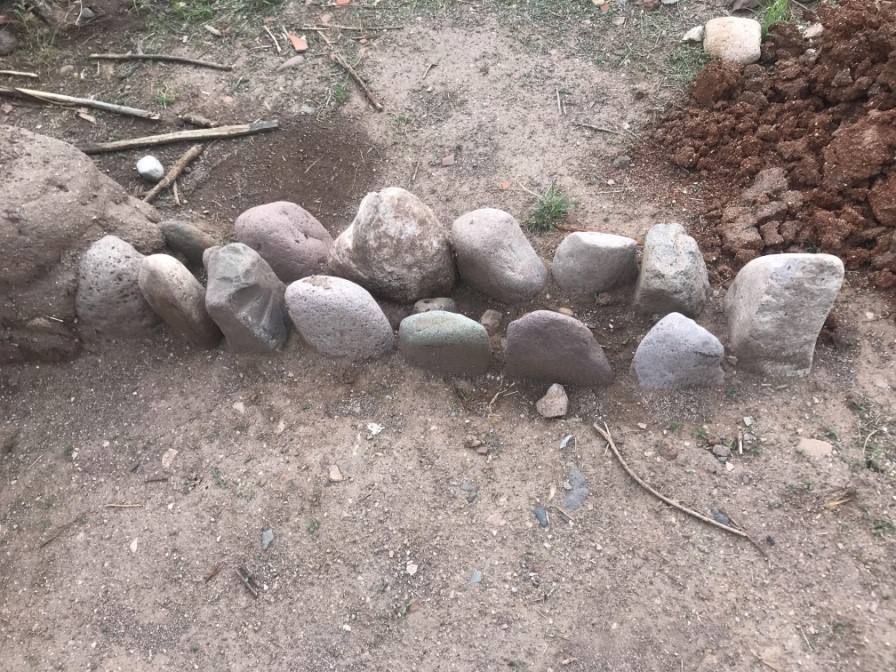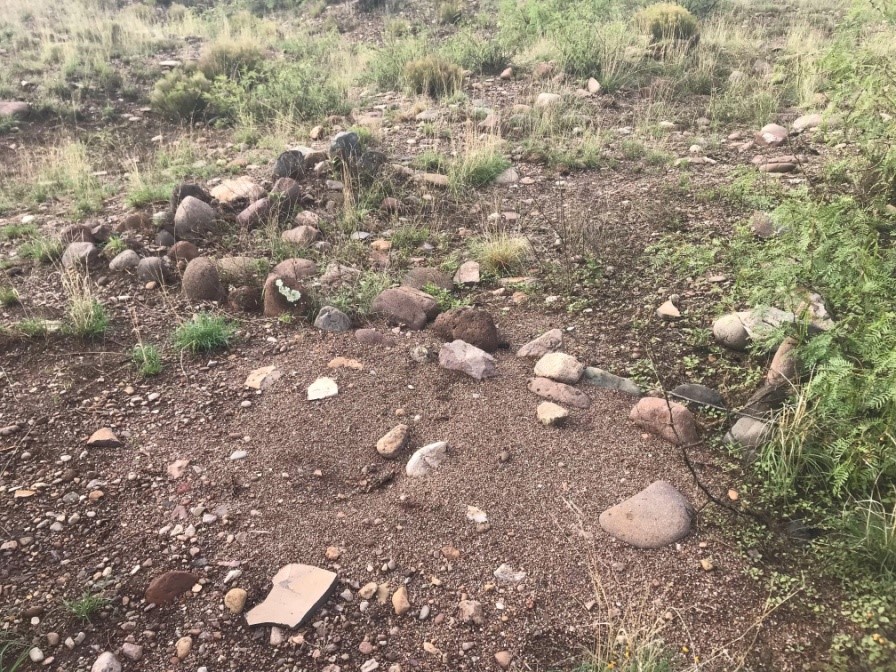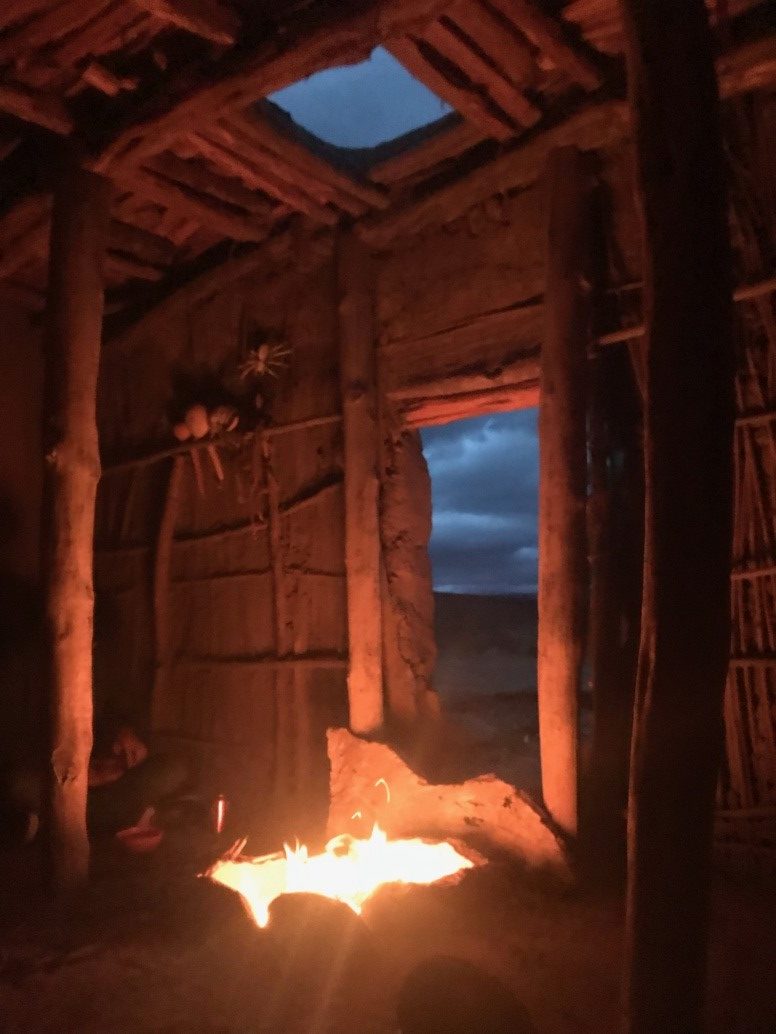- Home
- >
- Preservation Archaeology Blog
- >
- A Home away from Home

(June 28, 2022)—A place that has become near and dear to my heart is the adobe structure. This small little mudroom building has been my go-to spot for reading, stargazing, and sunset-watching. Over the past week, it has proven to be a perfect place for watching the monsoon storms roll in and sheltering from the rain.

During our Experimental Archaeology unit with Allen Denoyer, we helped build the second room by making mud and prepping some of the roof beams. We used stone axes to strip bark from the beams.

To build up the walls (create additional levels of adobe), I first had to create a hole in the ground with digging sticks. To make the process of digging easier, I filled the hole with water and mix the natural dirt into the water. Once the dirt was mixed together, I added sand to help the mud form and stick better to the existing adobe. I continued to add dirt and sand to the mix until the mud was the consistency of brownie dough. Next, I placed the mud into baskets and made the adobe wall wet where the mud was to be placed. The cracks of the wall were then sealed up with the new mud mixture and more mud was stacked, spread, and smoothed out using my hands and a rock.

I also added cimientos (foundation rocks) along one of the walls for support. This was a very useful activity because my excavation unit was in the process of uncovering the same sort of foundation. It was nice to understand how the cimientos were placed within the wall and what their purpose served. Our survey work also showed how cimientos were aligned.


Another aspect of adobe structures that I learned from this activity was how the walls themselves stood up against time and weathering. Because the walls of adobe structures melt over time, understanding the basic construction of the wall helped me to better understand how wall melt forms, which made it easier for me to identify wall melt while excavating.
Helping to create the adobe building not only taught me the concepts used in construction, but also helped me to understand how the building would have been used and lived in. Spending my free time on top of and within the structure itself was enlightening. For example, on some occasions, we had a small fire within the structure while it was raining. The interior was comfortably warm and dry, but it did become very smoky very quickly. This did not deter me from spending hours inside the structure, though, where I enjoyed the flickering of the light and pondered solutions to how to better ventilate the room.
